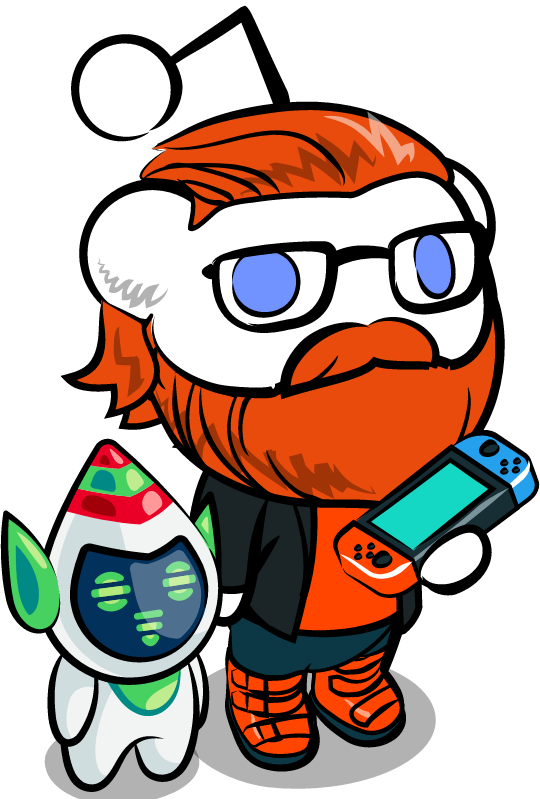Would this work or would I have problems:
Using dd command to backup an entire SSD containing dual boot Windows/Ubuntu partitions into an .iso file, with the intent to then dd that iso back onto the same size SSD in the case of a drive failure?
Would this work
Yes.
or would I have problems
Also yes.
I used to do this backing up my “servers”. By that I mean some Raspberry Pis and random old PCs running Debian. I even did so successfully when needing to restore the images. But it was fragile and also failed at times, sometimes to great inconvenience when it was a machine serving something important.
I’ve since moved to a different backup strategy for servers, but if I were to do this with a bare-metal machine I want to preserve, I’d use something like Clonezilla. The maintainers of that project know a whole heck of a lot more than I do of the ins and outs of disk management, backup, and restoration than I do with my simple
ddcommands. If it is something you’re just wanting to do for fun and experience,ddcan work. If you’re concerned with the security of your data/image, I’d use Clonezilla.Honestly, that just seems like you’re treating dd as some kind of arcanum. dd works just fine and I’ve been doing 1:1, full system backups for decades with it, no issues. Honorary mention for ddrescue / dd_rescue for recovery options, i. e. re-trying bad sector reads etc.
In fact, when Clonezilla doesn’t know your filesystem, it will simply employ dd to copy the data sector by sector.
I’d argue that Clonezilla (due to its use of partclone) is actually a less complete form of backup, since it will only copy used blocks, you don’t really end up with a clone of your devices, just a copy of what partclone believes to be your data. Don’t get me wrong, that is fine in most use cases, but there are some cases where this doesn’t cut it, e. g. wanting to backup / restore a storage device from a PLC where the vendor had the glorious idea to store licensing data in unused sectors, or when you want to create a forensic disk image, might want it look into d3dd then, although it absolutely works using regular old dd as well, d3dd just adds some amenities.
All I want to say is: dd is an absolutely reliable tool and can be a one stop solution for device backups. Also, I have absolutely no quarrels with Clonezilla, if it fits what you’re trying to do and it works, great.
As you seem to know a lot about Clonezilla, I’m allowing myself to ask you something.
Would Clonezilla work for doing a backup and reinstalling it on a completely different device?
I’ve already used it to backup and restore on the same device. I also tried to install my Surface Go device backup on an old Acer Computer but it failed to boot afterwards. I’m not sure if it’s because of the surface specific kernel or because it doesn’t work from one computer to another.
Would you know that?
In general, no, this won’t work. In your case, you’re lucky since at least the Surface Go is using an x86 CPU, so it’s not completely out of the question, but transferring the image as-is to a completely different device typically does not work without modification.
Simple example: your target device might not refer to existing hardware (let’s say a storage medium) in the same manner as your old device, so the existing references in your cloned image won’t work. There are other issues of course, e. g. missing drivers for different hardware present on the target device.
It’s possible to modify the image so it would boot, but given the Surface runs Windows, that’s going to be a chore. I’d consider this an interesting project if bored on a slow weekend, but I’d most likely just do a filesystem backup of relevant data and call it a day.
I forgot to say that I’m using Linux (Fedora 40). If you think it wouldn’t work, do you know another program which would?
My data is stored on the cloud, but I wouldn’t want to go through the hassle of setting everything up again if I move to another computer (extensions, mail, calendar, installed programs and settings).
Oh, that makes everything a lot easier. The majority of the relevant settings will be in your home folder then, i. e. in the ${HOME}./.config folder, while some might also be in ${HOME}/.local/share etc.
You probably want to backup the whole home folder anyway, so that would pickup most of your settings. In order to make that work on a different system, you would have to install all applications you were using on the tablet as well. Luckily, software installation in Linux is pretty easy, so you can export a list of installed applications from the Surface and then re-install them on your target system before migrating your home folder. The software list should become part of your backup. See e. g. https://unix.stackexchange.com/questions/82880/how-to-replicate-installed-package-selection-from-one-fedora-instance-to-another for an idea of how to perform this.
I have used this approach in the past and it will get you 95% there. There might be some global system settings that you’d like to also transfer to your new system, but you can add those as you discover you miss them on the target system.
Okay then I guess I’ll just backup my home folder on kDrive (my cloud service) and then just remember which programs are installed since the automatic listing of programs seems a bit too complicated for me. Thanks for the help!
I don’t know off the top of my head. I think that Clonezilla can modify images in such a way as they can be booted on a different type of device. My knowledge of the black magic of boot sectors and partition stuff is lacking. Also, you’d have to make sure the motherboard/BIOS is properly configured for reading the device in the same way that the original device was read. UEFI/BIOS stuff can be a pain in the ass to get right.
So my short answer is probably, but I wouldn’t be able to walk you through something like that. Wish I could be more helpful.
Okay thanks for the answer 🙏
Yes it can, but it’s up to your BIOS to be able to boot it. UEFI might work better, you still might need to manually add the boot entry to the efivars using efibootmgr. Many distributions also have documentation for a rescue boot and reinstalling the bootloader config.
As long as it’s not a mounted and running live system, it should work. Not the most efficient way to do such a thing, but I would think it should work.
You can zero out the free space on each partition then pipe the output from dd into gzip if you want to save space.
Might as well just use partclone at this point
Seconding partclone here, it’s the easiest solution for imaging that only backs up the data on the partition that is used. Plus, it’s in RescueZilla, which is pretty intuitive and user friendly for those that prefer GUIs
Gzip runs at tens of MB/s. Zstd runs at least 10x faster, and then goes fasterer with multithreading (-T0).
Don’t do this. If you have a 1TB drive with only 10GB being occupied, your image will be 1TB, and you will need a >1TB drive to store it, and another to restore it.
If you only backup the data you could do it in a much smaller size drive and it will be a lot faster to perform backups (otherwise you will need hours every time you want to create a new image).
deleted by creator
Works fine, though it’s not an “iso” file. But it doesn’t matter what extension you use.
I used to do this to switch an old laptop between Windows and Linux. I’d backup one, overwrite with the other. Swap as necessary.
Should work. You’d be better off dd’ing each partition separately.
Why’s that?
If you dd a 1TB hard drive, it will create a 1TB image. You’d need to have a >1TB drive to store it. If you dd each partition separately, this won’t be the case.
Plus it will be easier to discriminate between different FS and mount them accordingly.
Many years ago I tried it, but didn’t really read up on it. Wanted to back up my Pi’s sdcard while the system was running. I even fucking named that script “online-backup”.
Now every time I ran that, after hours, I noticed my Pi was crashing, and never booted back up. I used chinese sd cards so I blamed it on them.
But this happened multiple times, just to learn I was using dd absolutely wrong.
dd was always a scary utility to me, and still is. I fucked up things with dd, regardless I quadruple checked everything 😅
but to answer the question; it’s possible, but you really need to know what are you doing.
Yes. Make sure neither are mounted.
Use larger block sizes with bs=<like, idk, 16M> will make it go faster.
Check out Clonezilla, which is the perfect tool for the job.
I have done this a few times, so long as the drive isn’t mounted it works fine.
One advantage of this approach compared to clonezilla is you can pipe it through netcat or similar and move it to another machine. You can also first pipe it through gzip as well to save on the transfer bytes a bit as well and then on the other end just store the compressed image or unzip it. Combine a few tools together and you have quite a lot of capability for complete image backups but its usually best done for the boot drives from a live USB.
This will definitely work. I did this recently when upgrading a Steam Deck to a bigger drive. Other suggestions below are probably faster though.
you can even mount the image as a loop device (i suggest read only (ro)) to extract files
Like everyone has said there’s way better ways of doing it.
HOWEVER if you wanted to use dd you totally could. I’d recommend piping into something like gzip/zstd to save some space though.
dd if=/dev/sda | gzip >/mnt/backup_disk/sda.gz
You could also use restic backup the raw block device too.
That being said, clonezilla is exactly what you want
It would technically work, yes.
But also, you’re wasting a lot of storage space that way, especially if you do it often. You really only should backup your home directory, it contains all your data. You can simply re-install the rest from the internet.







